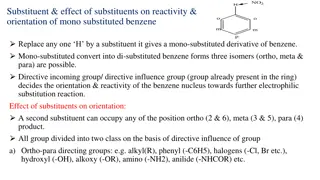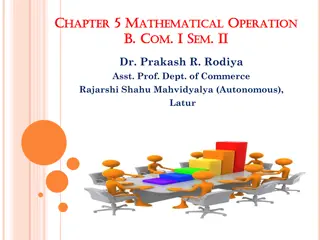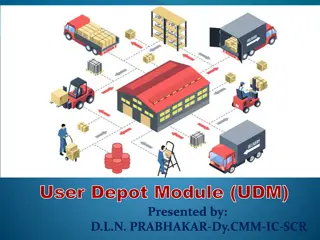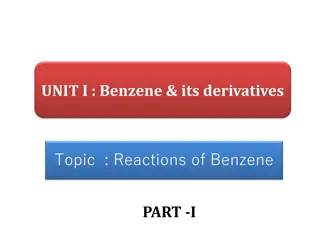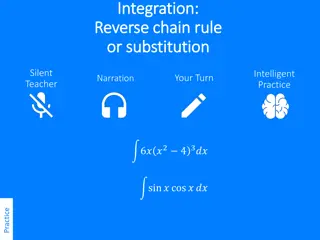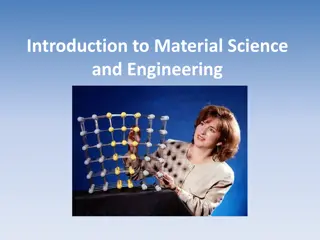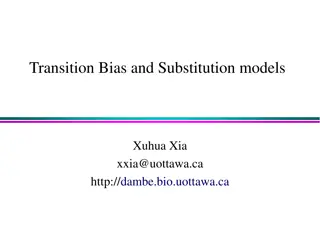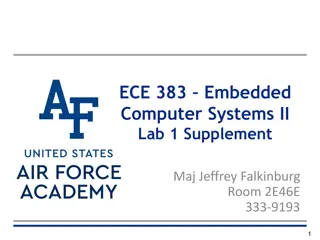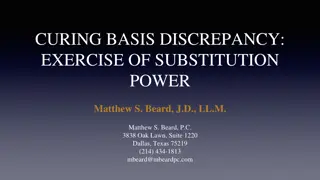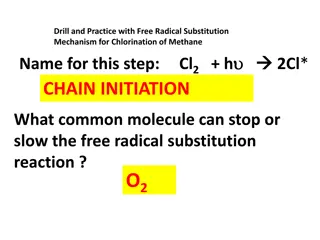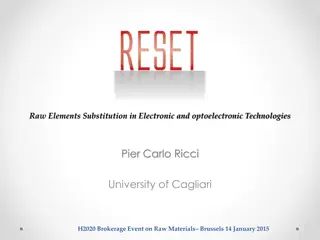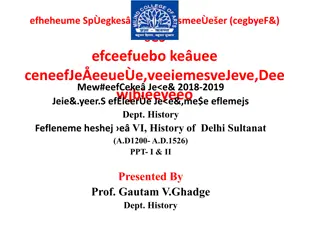Module C1:Material substitution.
Explore the concept of material substitution in the context of circular economy principles for energy storage. Understand the importance of material availability, limitations of secondary raw materials in energy applications, and classification of energy conversion and supportive materials. Discover research on element availability, utilization of secondary raw materials in energy applications, metal recycling opportunities, and examples of regeneration procedures for enhanced energy storage materials.
Download Presentation

Please find below an Image/Link to download the presentation.
The content on the website is provided AS IS for your information and personal use only. It may not be sold, licensed, or shared on other websites without obtaining consent from the author.If you encounter any issues during the download, it is possible that the publisher has removed the file from their server.
You are allowed to download the files provided on this website for personal or commercial use, subject to the condition that they are used lawfully. All files are the property of their respective owners.
The content on the website is provided AS IS for your information and personal use only. It may not be sold, licensed, or shared on other websites without obtaining consent from the author.
E N D
Presentation Transcript
Module C1: Material substitution AAE-E3120/E3121 Circular Economy for Energy Storage Dr. Neha Garg
Learning outcomes Connect the Material availability for the new material solutions (Vesborg analysis) Understand limitation of the secondary raw materials use in energy application
Material availability VESBORG analysis P. Vesborg et al. RSC Advances, 2012, 2, 7933 7947 DOI: 10.1039/c2ra20839c
Element availability P. Vesborg et al. RSC Advances, 2012, 2, 7933 7947DOI: 10.1039/c2ra20839c
Element availability Lecture journal Using Vesborg classification, prepare a list of your application s state-of-art materials on their availability Classify by: 1) Energy conversion materials (if any) 2) Supportive materials P. Vesborg et al. RSC Advances, 2012, 2, 7933 7947DOI: 10.1039/c2ra20839c
Element availability Energy Conversion materials: More critical elements Supporting materials: More common materials E. Fan et al. Chem. Rev. 120 (2020) 7020 7063
Secondary raw materials (raw materials from recycling) E. Fan et al. Chem. Rev. 120 (2020) 7020 7063
Metal Wheel What metals can we mix together so that they can be recovered? By von Schaik and M.A. Reuter 2013 Metal Recycling Opportunities
Example of utilization of secondary raw materials in energy application Illustration of the recycling and regeneration procedure. Yang Shi et al. Green Chem., 2018, 20, 851 862 DOI: 10.1039/c7gc02831h
(a) Cycling and rate (inset) performance of recycled LiCoO2 treated with pure LiOH and mixed Li salt, and (b) cycling performance of pristine and hydrothermal-regenerated LiCoO2 powders Yang Shi et al. Green Chem., 2018, 20, 851 862 DOI: 10.1039/c7gc02831h
Secondary materials (recycled) can they be used in high demand applications? Material demand for HIGH activity and Durability Must maintain mechanical and chemical properties During use During dismantling and recycling process Can not lower the Lifetime of the system No point of preparing high energy intensive application for lower lifetime
Secondary materials (recycled) can they be used in high demand applications? Secondary raw materials (recycled) Currently used in less demanding application (downgrading) Can they be used solely or mixture with virgin materials? Impurities? What level of purity is required? Durability issues? Research still needs to be prepared in real application and in their performance (for long time) Proof of concept case, so that the manufacturers will be able to take these into their applications
Material Substitution New Material Solutions
How to develop materials for energy application Performance Durability Recyclability
What is valued? Performance Top activity low durability Performance Good activity good durability Durability Recyclability Time/cycles Lecture Journal What do you think would need to be the most important design criteria?
Take home message Balancing between the activity/durability/recyclability is challenging but needed in the new energy storage device design.




